Displaced Intra-articular Distal Humerus Fracture with Olecranon Osteotomy.
Score and Comment on this Case
Clinical Details
Clinical and radiological findings: A 29-year-old female patient sustained a fall from a height, resulting in a contusion to the right elbow. Radiological assessment revealed a displaced intra-articular fracture of the distal humerus. The neurovascular examination was unremarkable, but significant swelling was noted at the site of injury.
Preoperative Plan
Planning remarks: The preoperative plan involved a posterior approach to the elbow, necessitating an olecranon osteotomy for optimal visualization and access to the distal humerus fracture. Ulnar nerve decompression and mobilization were planned to prevent iatrogenic injury during the procedure.
Surgical Discussion
Patient positioning: The patient was positioned prone on the operating table to facilitate a posterior approach to the elbow.
Anatomical surgical approach: A posterior midline incision was made over the elbow, extending proximally and distally to allow adequate exposure. An olecranon osteotomy was performed to provide direct access to the distal humerus. The ulnar nerve was identified and carefully decompressed and mobilized. The articular surface of the distal humerus was reduced and temporarily fixed with a screw and Kirschner wires. The distal fragment was then aligned with the proximal humerus using additional Kirschner wires. Definitive fixation was achieved using two orthogonal plates, ensuring stable reconstruction of the distal humerus. The olecranon osteotomy was repaired using a tension band wiring technique.
Operative remarks:Intraoperative fluoroscopy confirmed satisfactory reduction and alignment of the fracture fragments. The use of orthogonal plating provided robust stabilization of the distal humerus, allowing for early mobilization postoperatively. The tension band wiring of the olecranon osteotomy ensured secure fixation, minimizing the risk of postoperative displacement.
Postoperative protocol: Postoperative rehabilitation included early range of motion exercises initiated within the first week to prevent elbow stiffness. Weight-bearing activities were restricted until radiographic evidence of fracture healing was observed.
Follow up: Not specified.
Orthopaedic implants used: Orthogonal plates for distal humerus fixation, Kirschner wires, tension band wiring for olecranon osteotomy repair.
Search for Related Literature
Industry Sponsership
contact us for advertising opportunities
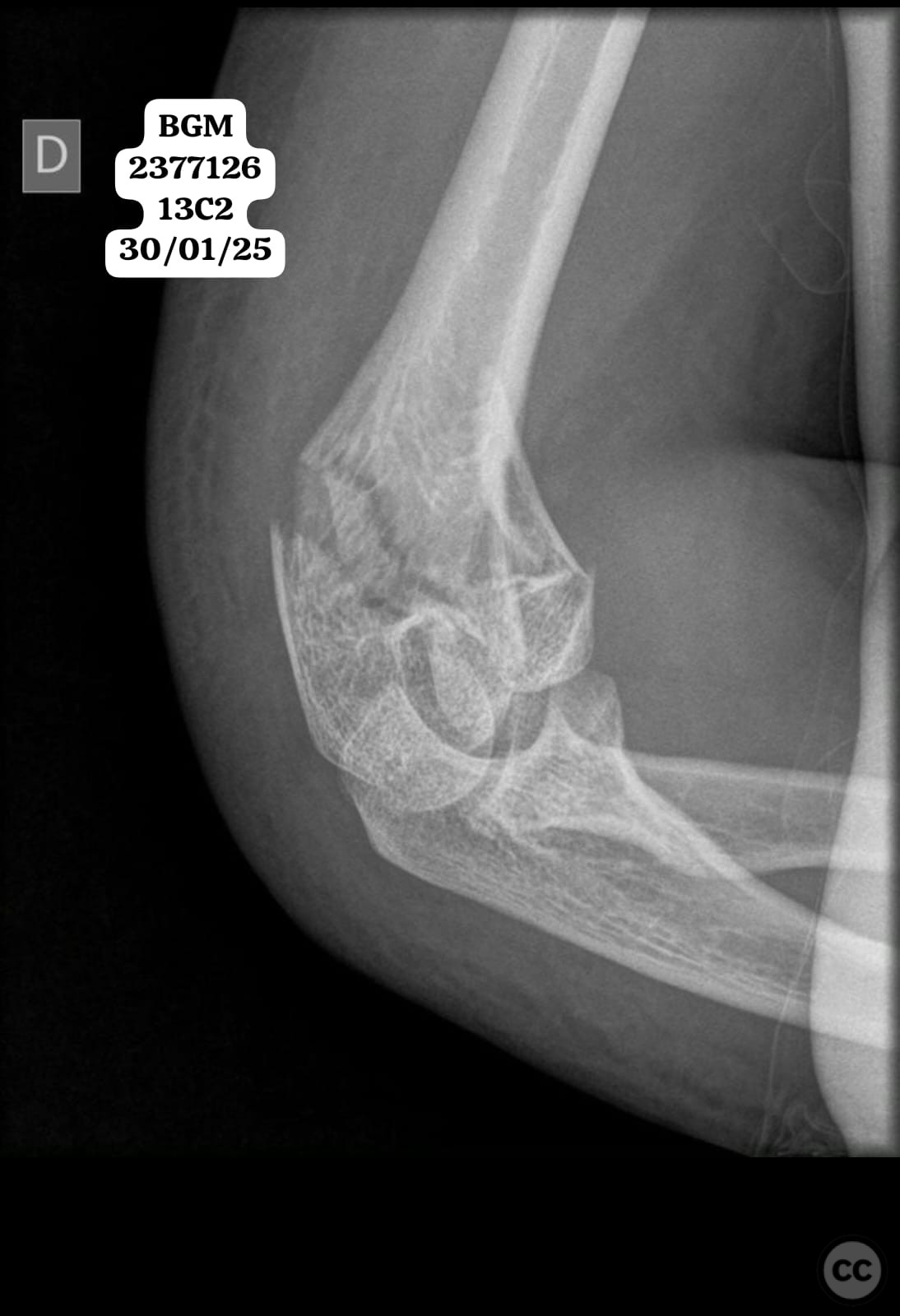

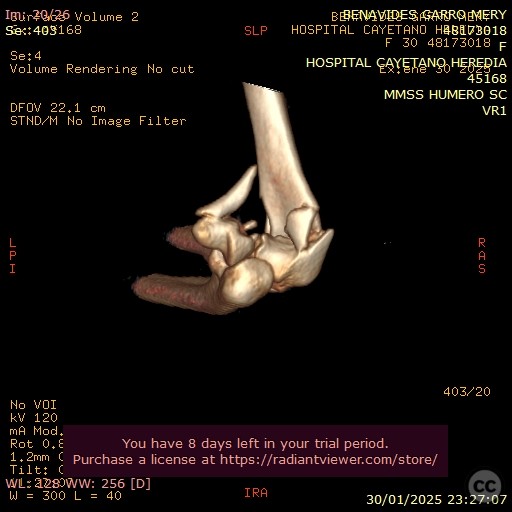
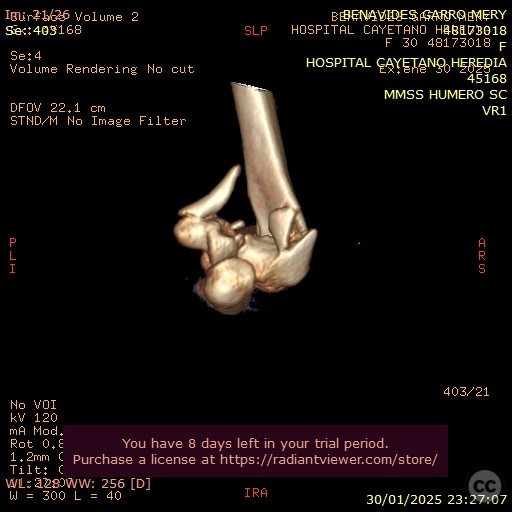
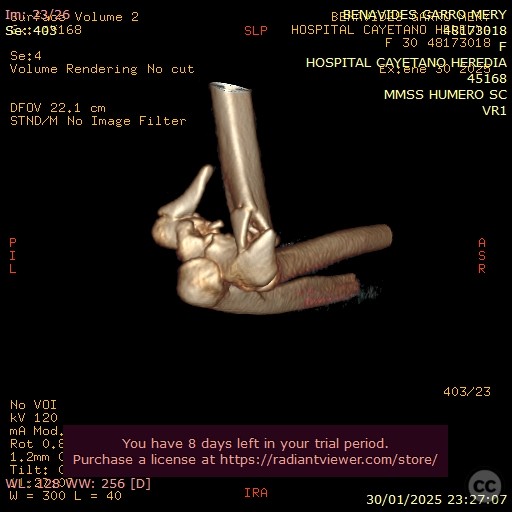
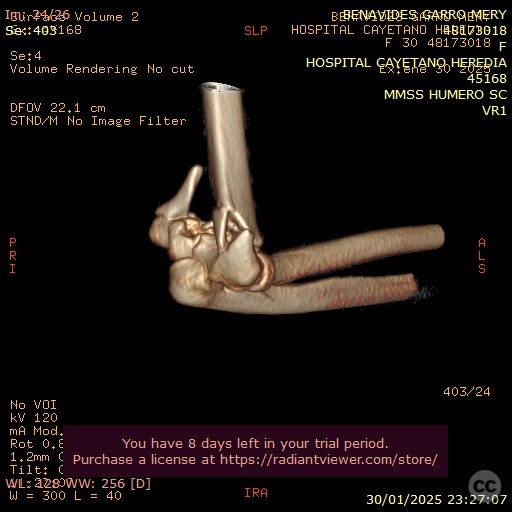

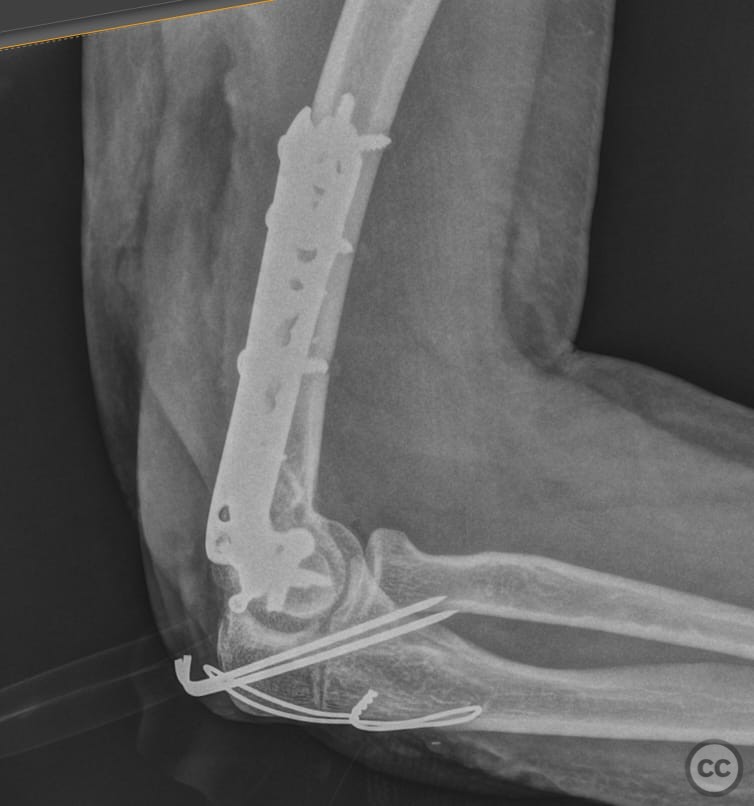
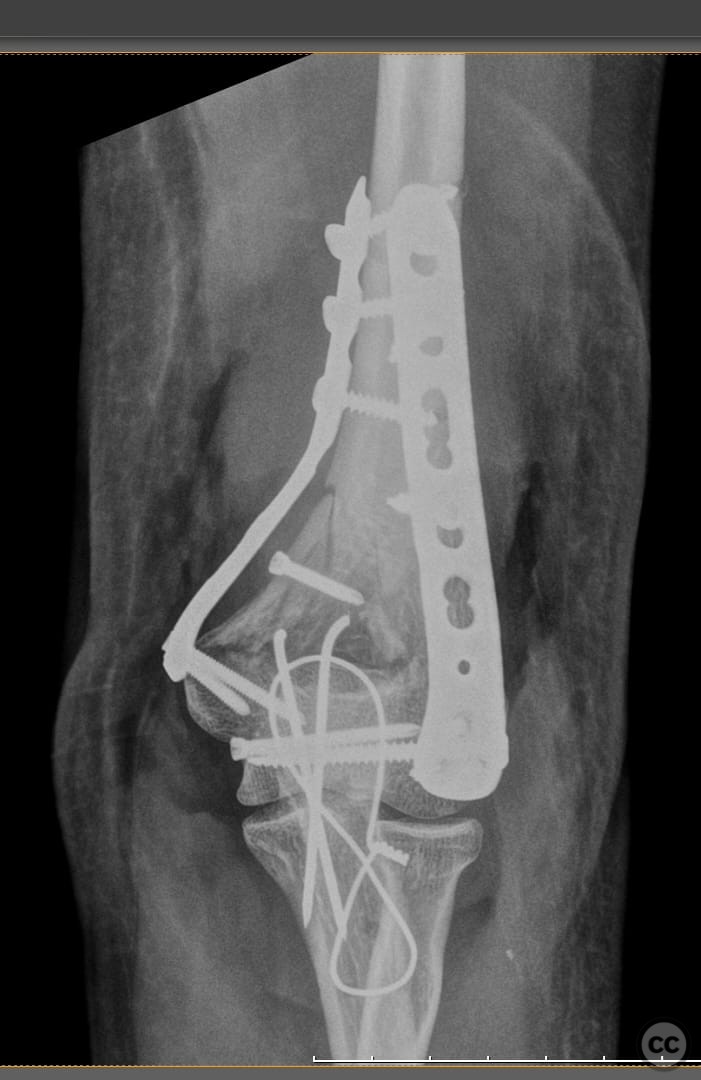


Article viewed 100 times
04 Feb 2025
Add to Bookmarks
Full Citation
Cite this article:
LUIS LEONCIO TEMOCHE DIAZ. (2025). Displaced Intra-articular Distal Humerus Fracture with Olecranon Osteotomy.. Journal of Orthopaedic Surgery and Traumatology. Case Report 14070951 Published Online Feb 04 2025.